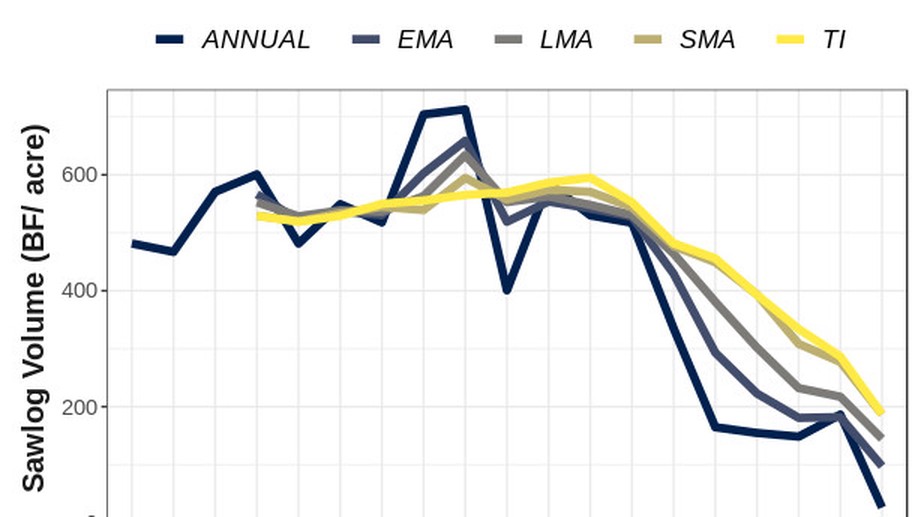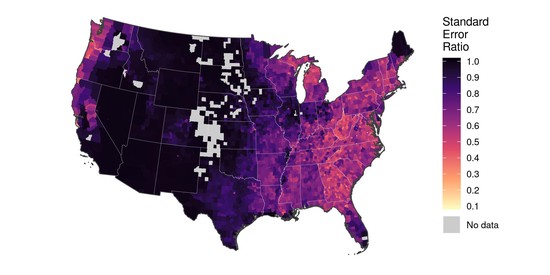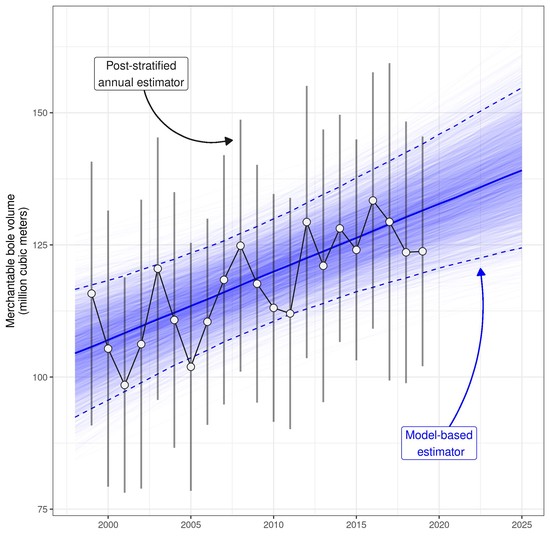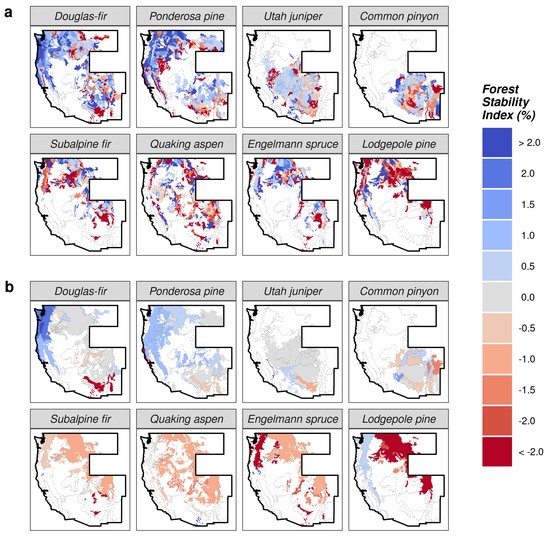Unlocking the FIA Database in R
Install the released version from CRAN:
install.packages("rFIA")
Or, the development version from GitHub:
devtools::install_github('hunter-stanke/rFIA')

Install the released version from CRAN:
install.packages("rFIA")
Or, the development version from GitHub:
devtools::install_github('hunter-stanke/rFIA')

rFIA is an R package aimed at increasing the accessibility and use of the USFS Forest Inventory and Analysis (FIA) Database. Providing a user-friendly, open source toolset to easily query and analyze FIA Data, rFIA simplifies the estimation of forest variables from the FIA Database and allows all R users (experts and newcomers alike) to unlock the flexibility and potential inherent to the Enhanced FIA design.
Specifically, rFIA improves accessibility to the spatio-temporal estimation capacity of the FIA Database by producing space-time indexed summaries of forest variables within user-defined population boundaries. Direct integration with other popular R packages (e.g., dplyr, sp, and sf) facilitates efficient space-time query and data summary, and supports common data representations and API design. The package implements design-based estimation procedures outlined by Bechtold & Patterson (2005), and has been validated against estimates and sampling errors produced by FIA’S EVALIDator.
Current development is focused on the implementation of spatially-enabled model-assisted estimators to improve point and change estimation at small spatial and temporal scales. We envision rFIA as a key component in the future of the FIA Program, targeting expansion in small area estimation, timber product monitoring, urban inventory, and the development of long-term monitoring and reporting tools.
See Example Usage to get started. To report a bug or suggest additions to rFIA, please use our active issues page on GitHub, or contact Hunter Stanke (lead developer and maintainer). To cite rFIA, please refer to our recent publication in Environmental Modeling and Software (doi: https://doi.org/10.1016/j.envsoft.2020.104664).
Hunter Stanke is the lead author and maintainer of rFIA. He is a PhD student in the The Harvey Lab and the Ecosystem Biogeochemistry Group in School of Environmental and Forest Science at the University of Washington, and current Graduate Research Fellow with the National Science Foundation. His research interests lie at the intersection of disturbance, landscape, and ecosystem ecology. See his personal website here.
PhD Environmental and Forest Science, Current
Univeristy of Washington
MS Forest Science, 2020
Michigan State Univeristy
BS Forestry, 2019
Michigan State University
Andy is a professor at Michigan State University with a joint appointment in the Departments of Forestry and Geography, and is a co-author of rFIA. A central theme in his research is the use of hierarchical models to integrate information from disparate sources to improve inference and prediction. In terms of application areas, his research focuses on spatial-temporal modeling of changing ecosystem components and systems.
PhD Natural Resources Science and Management, 2006
University of Minnesota
MS Statistics, 2007
University of Minnesota
MS Forestry, 2003
University of Massachusetts
BS Forestry, 2000
The Pennsylvania State University






